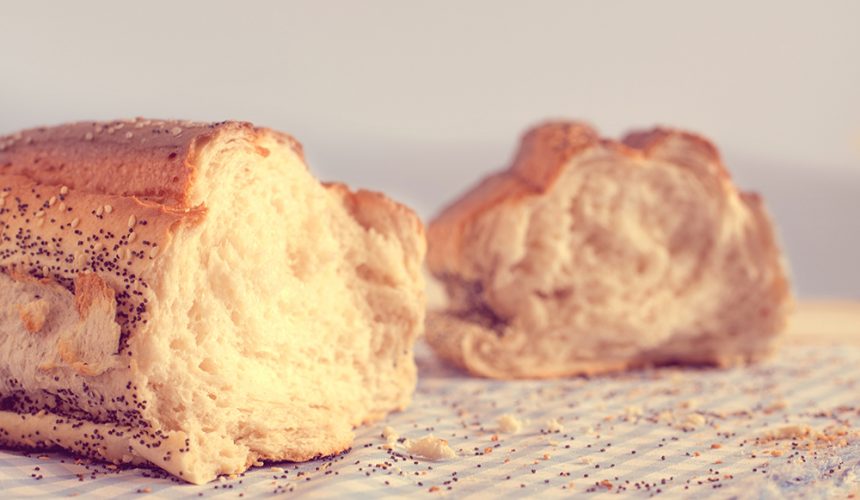THE THIRD SUNDAY OF EASTER
APRIL 26, 2020
LUKE 24: 13-35
Now that same day two of them were going to a village called Emmaus, about seven miles from Jerusalem. They were talking with each other about everything that had happened. As they talked and discussed these things with each other, Jesus himself came up and walked along with them; but they were kept from recognizing him.
He asked them, “What are you discussing together as you walk along?”
They stood still; their faces downcast. One of them, named Cleopas, asked him, “Are you the only one visiting Jerusalem who does not know the things that have happened there in these days?”
“What things?” he asked.
“About Jesus of Nazareth,” they replied. “He was a prophet, powerful in word and deed before God and all the people. The chief priests and our rulers handed him over to be sentenced to death, and they crucified him; but we had hoped that he was the one who was going to redeem Israel. And what is more, it is the third day since all this took place. In addition, some of our women amazed us. They went to the tomb early this morning but didn’t find his body. They came and told us that they had seen a vision of angels, who said he was alive. Then some of our companions went to the tomb and found it just as the women had said, but they did not see Jesus.”
He said to them, “How foolish you are, and how slow to believe all that the prophets have spoken! Did not the Messiah have to suffer these things and then enter his glory?”
And beginning with Moses and all the Prophets, he explained to them what was said in all the Scriptures concerning himself.
As they approached the village to which they were going, Jesus continued on as if he were going farther. But they urged him strongly, “Stay with us, for it is nearly evening; the day is almost over.” So he went in to stay with them.
When he was at the table with them, he took bread, gave thanks, broke it and began to give it to them. Then their eyes were opened and they recognized him, and he disappeared from their sight. They asked each other, “Were not our hearts burning within us while he talked with us on the road and opened the Scriptures to us?”
They got up and returned at once to Jerusalem. There they found the Eleven and those with them, assembled together and saying, “It is true! The Lord has risen and has appeared to Simon.” Then the two told what had happened on the way, and how Jesus was recognized by them when he broke the bread.
SERMON
Let me break this bread.
Did you recognize Jesus?
Maybe I need a different loaf of bread.
Let’s try it again.
Nope, I did not recognize Jesus in the breaking of this bread. What about you?
Are we missing something?
Did the first disciples know something we do not?
It is likely they did.
In the 21st century, any of us raised in a church have been taught that this breaking of bread refers to communion. And, the breaking of bread has become institutionalized. For example, to remain on the rolls of a Lutheran congregation, one must, within a specified period of time, give one form of bread—money in the offering plate and receive another form of bread—holy communion.
But this interpretation of the breaking of bread could not have been in the disciples’ experience because there was no church at that time. And there is no indication that this was a sacramental sharing of bread and wine, as in the last supper, but only the breaking of bread.
In a religious context, we would call the breaking of bread a symbolic act. A symbol provides food for thought, which is a tasty image for our reflection this morning.
There is a literal breaking of bread and then there is a more indirect, but significant meaning that we must make through our imaginative thoughts and intuitions. Soul imagines. The symbol points to a variety of possible soulful meanings.
For the ancients, the breaking of bread symbolized the death of the victim of sacrifice.
In the breaking of bread and in the giving of the bread to the disciples, they were able to see and recognize the suffering, crucified, and risen Christ.
But there is more. A loaf of bread contains countless grains of wheat in one substance so, in the sharing of the bread, the disciples’ lives of suffering, crucifixion, and rising are connected spiritually and soulfully to the broken body of Christ.
We are reminded of this when, at communion, we are given the body of Christ in the form of bread and the pastor or assistant chooses to say, “the body of Christ broken for you….”
We, too, are taking the broken body into our lives where we, too, suffer with the Christ. We too, participate in the universal pattern of suffering, dying, and rising….
In his suffering, the gospel writer, Matthew, notes that Jesus did not die on the cross until the ninth hour. We may miss this detail within the breaking of bread which symbolizes the death of the victim of sacrifice.
Imagine. They likely nailed Jesus’ wrists to the cross because a nail through the hands would rip through the flesh. A nail through his feet. Pinning his body to the cross for nine hours. Once the muscles give out, it is excruciating. Shoulder separate from the sockets and the arms can lengthen by inches. The crucified would try to support themselves by putting pressure on their injured feet, but with legs bent and feet nailed through, it is only a matter of time before the leg strength gives way as well.
Most experts agree that what ultimately kills Jesus is suffocation. Either the body loses so much oxygen that he smothers to death or the carbon dioxide level in the body rises so much that body tissue turns acidic and destroys their own cells.
As the bread is broken, we are drawn into the symbolic reality that the body must bear its suffering if there is to be transformation.
Jesus knows that “unless the single grain of wheat loses its shell, it remains a single grain.”
And so, each of us as a single grain of wheat is cracked open and joined together with the yeast of suffering, molded into one bread, as the body of Christ. Profoundly, we are in this together.
We cannot think our way to this truth. This is not about doctrine or right belief. This is about experiencing the truth. If are willing to bear our personal suffering and together bear the suffering of the world, we find our way to transformation. As did Jesus.
As did the disciples, as they recognized that the breaking of bread was the way of their suffering to being joined to the suffering and rising Christ. This is the universal pattern of reality that Jesus reveals.
What we must recognize in the breaking of the bread is that the worst way to suffer is by not accepting one’s suffering. This is the greater pain, because it lasts forever. As long as we do not embrace our suffering, it continues to chase us, pursue us, stalk us until we are dragged down into meaninglessness.
I pity the people who are running from their suffering in this pandemic. Protesting because women miss the beauty parlor. Protesting because they want to go to the beach. Governors who are declaring bowling alleys essential businesses.
Live free or die? How about live free to love?
How about the Christ freedom to care for your neighbor?
How about the Christ freedom to practice acts of kindness?
How about the Christ freedom to care for the common good?
How about the Christ freedom to sacrifice for the sake of others?
How about the Christ freedom to take up your cross and follow Jesus?
Yes, you are free to act out, but we are free to label your behaviors as shallow, narcissistic, and in opposition to life….
Along with the symbolic meaning of the breaking of bread, there can also be acts that are diabolic. The word symbol means to throw together. A symbol brings together various levels of meaning that are, theoretically, infinite.
Diabolic means to throw apart. So, the diabolic always divides, separates, causes division. Whenever someone works to bring separation, evil enters the world.
These protests are not about freedom. They are about power. As carl Jung points out, “where there is love, there is not power. And where there is power, there is not love.”
The distorted power of the ego cries for what the small self wants. Let’s not forget that ego stands for edging God out.
These protests are not about the breaking of bread. These protests are about cowardice and death. To be a grain of wheat in the bread that is broken means that you have the courage and grace carry the weight of your suffering.
That is the etymology of the word: suffering has to do with weightiness. It is about learning to bear our suffering, even as it weighs us down. Gracefully bearing our suffering, rather than an automatic weapon.
If you are bearing your suffering during this pandemic, then you are feeling the weight of living consciously.
And Jung, in another moment of brilliance speaks of the burden of consciousness. If you are living consciously, then you know the burden of remaining awake and aware.
But it is a burden that has meaning. Without meaning, we can hardly bear any suffering. With meaning, we can bear all manner of suffering.
If you are bearing this suffering consciously, then you are contributing to the healing of the world. Each of us, in our own small, personal way, are making an immeasurable impact when all of us are joined as grains of wheat in the one body of Christ. The one broken bread.
Regardless of age, regardless of whether or not we are religious, regardless of male, female, LGBTQIA, regardless of race, we all are joined as the suffering body of Christ.
Made known in the breaking of bread.
In feeding the poor, in making a mask, in wearing gloves and a mask, in watching out for our neighbors, in giving to ministries that care for those on the margins, in contacting the elderly, in giving of ourselves, we become the suffering and arising Christ in the world.
You who bear the weight of your own suffering are experiencing the transformation of your wounds instead of transmitting your suffering to others. In this way, your suffering becomes sacred wounds.
And as wounds become sacred, they become channels for love, compassion, healing, and justice.
We are being broken as the body of Christ. We are one bread, broken for the world. We bear our broken spirits and souls with dignity, because the suffering and rising Christ bears us up upon his own broken body.
SERMON SONG
THE WEIGHT by THE BAND
Photo by Mike Kenneally on Unsplash



Leave a Reply
You must be logged in to post a comment.